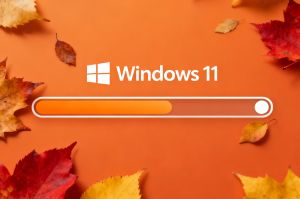 Windows 10 Extended Security Updates (ESU) program explained
Windows 10 Extended Security Updates (ESU) program explained
The end of life of Windows 10 is nigh: as we have reported in several pieces, Microsoft plans to pull the plug on the support rig of one of its best operating systems (subjective opinion) on October 14, 2025. Millions of computers working under OS will not brick after this date if not upgraded to Windows 11: everything will continue as usual save for the updates.
Windows 10 refuses to fade into oblivion: in August 2025, a couple of months before the October EoL event, it still had a bit more than 45% of the market, compared to 49% belonging to Windows 11. Microsoft realized that the process of transition to the latest version would take longer than expected and announced the Extended Security Updates in the beginning of 2025. Initially, it was a paid deal, but over time, the conditions have changed. This piece sums them up for late September, 2025.
Free and paid versions of the Windows 10 ESU program
First off, go to Settings → Update & Security → Windows Update; if your computer is eligible for the program, you will see a link to the enrollment page. The requirements are nothing complicated: running Windows 10 version 22H2 (Home, Professional, Pro Education, or Workstations), having the latest updates installed, and the administrator status of the Microsoft account used to enroll in the ESU.
There is one paid, another conventionally paid, and a free way (with strings attached) to enroll in the ESU program.
- ESU enrollment — the paid option: simply pay $30 or the equivalent in local currency, and you are in.
- ESU enrollment — the points payment option: you can pay for the participation with your Microsoft Rewards points (1,000 of them); read on to learn how to get those points.
- ESU enrollment — the free option with strings attached: turn on Windows Backup and OneDrive sync, and you can have the post-EoL Windows 10 security updates for free.
Users in Europe — rather, the European Economic Area (EEA) — have different conditions thanks to the European regulators: they don’t need to set up Windows Backup and sync to OneDrive, nor pay anything if they enroll using their Microsoft account (otherwise, the $30 fee applies).
How to earn Microsoft Rewards points?
To earn those points, you need to sign in to the Rewards dashboard with your Microsoft account, and then just do the usual things but using the company’s services:
- search online in Bing;
- buy in Microsoft Store (Xbox games included);
- participate in promotional activities offered on the Rewards dashboard;
- play games on Xbox.
How long will the Windows 10 ESU program last?
Thus far, Microsoft promises to keep the security updates coming up to October 13, 2026.



